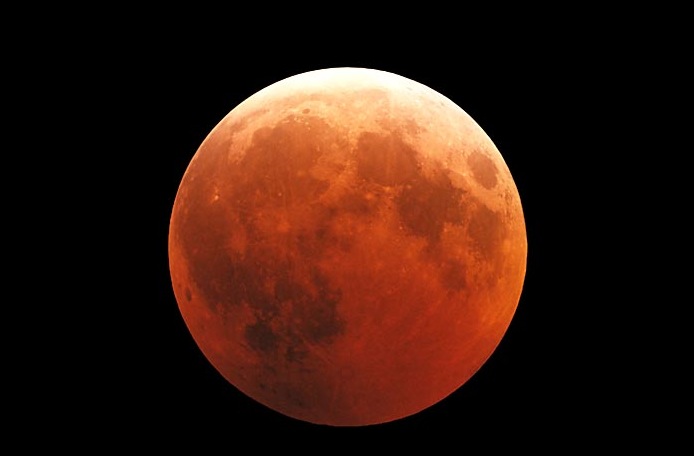We're open daily this holiday! View holiday hours
Science News
Lunar Eclipse Tonight!
December 20, 2010

By Bing Quock
Late in the evening of December 20th and into the early morning hours of the 21st, the full Moon will pass through the center of Earth’s dark, reddish shadow, turning a rusty, brick-colored hue. This event, a total lunar eclipse, was frightening to ancients, who thought that it represented blood on the Moon – the result of a terrible battle in the heavens. Later, the philosophers of ancient Greece used the event to determine the spherical shape of Earth. And in 1504, Christopher Columbus, while stranded on Jamaica, used his knowledge of an upcoming eclipse to take advantage of native superstitions and coerce locals to keep him and his crew supplied until he was rescued.
Weather-permitting, the eclipse will be visible in its entirety from North America. The Moon enters Earth’s penumbra – the faint, outer fringe of its shadow – at 9:29 p.m. PST, but this part of the eclipse won’t be obvious, since the penumbra is so pale. The more noticeable umbral eclipse starts at 10:32 pm PST, when the Moon starts to enter the darkest part of our planet’s shadow, the umbra. Observers will be able to see the shadow slowly creep across the Moon’s face, moving from the Ocean of Storms on the Moon’s western hemisphere toward the Sea of Crises to the east. When the Moon is about halfway into the shadow, the curvature of the shadow’s edge will be evident – the visual clue understood by Aristotle in 400 BC to indicate that Earth is a sphere, casting a round shadow no matter what direction the Sun’s light is coming from.
Totality – when the Moon is completely-immersed in the shadow, begins at 11:40 p.m. PST. This is when the Moon looks like a glowing, red coal hanging in the night sky. This is because Earth’s shadow isn’t black – refracted by Earth’s atmosphere, the light of all the sunrises and sunsets taking place on Earth at that moment are bent inward to fill the shadow, tinting the Moon. The intensity of the color will depend on how clear Earth’s atmosphere is along the periphery through which sunlight is passing; volcanic ash, dust, smoke, and other pollution will cause the shadow to be darker and the color less pronounced.
Totality lasts slightly more than an hour, ending at 12:53 a.m. PST, when the Moon begins to exit the umbra, and a white sliver of brightly-lit lunar disk appears on one edge, slowly encroaching farther across the Moon’s face. The umbral eclipse ends at 2:01 a.m. PST, although the Moon will take about another hour to leave the faint penumbra.
This, the only total lunar eclipse of 2010, occurs (for the most part) on the December solstice – preceding the beginning of winter for the northern hemisphere by only 16 hours.
Bing Quock is the assistant director of the Morrison Planetarium.